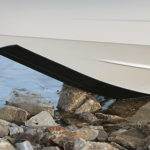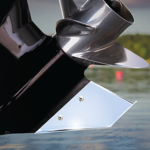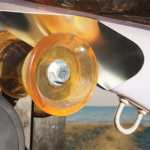How to Catch Big Bass All Spring with Trait Zaldain
Like no other season, spring offers opportunities for bass anglers. Hordes of fish come into the shallows to feed in preparation for the spawn. But while it brings fish shallow and active, the sheer diversity of options can confuse even veteran anglers. Not only can fish be caught on numerous patterns and baits, but also three phases exist during spring: pre-spawn, spawn, and post-spawn. Adjustments are necessary for each of them. Today we’re going to learn how to catch big bass all spring from the pro, Trait Zaldain.
Blueprints for how to catch big bass all spring
Trait Zaldain has been a B.A.S.S. Open tournament angler since 2012, competing in 36 different tournaments over the entire eastern half of the country. She has seen the spring phases play out dozens of times, and is so tuned into the details, that she has her own line of rods for the different applications. Her passion for the sport is contagious. Her approach to the phases is simplistic and effective. It is certain to make you a more competent angler this spring.
“Spring is FUN! It is ‘game on’ time,” she exclaims. “This is your opportunity to catch the big one, and the time when everyone should be fishing!”
Today she helps us break down her blueprints for each of the three phases of bass spawn.

How to catch big bass pre-spawn
Blueprints to make the Pre-Spawn “Money Time”
During the pre-spawn phase, bass begin feeding heavily. The metabolism of cold-blooded fish slows down during the cold water of winter months. But as the temperature rises, so does their metabolism, along with their appetites. In addition, much like a grizzly bear preparing for hibernation, bass need to put on extra weight as weight loss is inevitable through the rigors of spawning. It sets up the perfect storm to catch big bass.
“The pre-spawn begins when the weather becomes consistent,” Zaldain explains. Normally this coincides when water temperatures reach 50 degrees, but Zaldain warns this is not always the case. “Temperature plays a part to an extent, but when they’re ready to go, they go. The temperature rule does not always apply.” With an understanding how to attack structure with the correct bait selection, she has follows the blueprint below to put bass in the boat.
1. Zaldain targets isolated objects when chasing pre-spawn fish. She enthusiastically claims, “Small weed patches, a ditch, stump, log, or rock – those spots are Money!” Her search for these objects begins in front of spawning flats, but they can also be found on points outside spawning coves. “These are the spots that can produce your biggest bass of the season. Big females hang out and gorge before moving up to spawn,” she reveals.
2. Since the fish are constantly on the move searching out their next meal, Zaldain does the same. She puts her trolling motor through a workout. “I keep moving. The more isolated objects I can hit, the greater my odds of placing my bait in front of a big one.” Fish come and go on these objects, so she often makes casts to them multiple times during a day.
3. Her attack is twofold: “I throw moving baits, such as spinnerbaits and crankbaits, but I also love pitching!” She adds, “This time of year leaves some room for error. The presentation with a jig during other seasons must be perfect, but during the pre-spawn, a flip does not have to be perfect. The fish are there to eat, and putting it in front of them is often all that needed to get a bite.”
A ½ ounce chartreuse and white Santone Pretender Series spinnerbait is her number one bait. “I sling this past every isolated object, and then retrieve it back along the edges. Bass come out and ambush it.” Lipless and squarebill crankbaits are also big players in her arsenal; so much so, she has her own series of rods. When throwing any crankbait, she matches it up with W&M Trait Zaldain Square Bill Crankin’ 6’8″ Pink Rod. When pitching a jig, she prefers the large ½ ounce Santone Rattlin Jig in the bedbuster color scheme. She pitches to the edges of the objects, but will also throw to any openings in weedbeds. Rod selection is critical, “I always use a W&M Trait Zaldain Elite 7’4″ Jig Worm Pink Casting Rod for a combination of control and power.”

Three Steps to Catch Spawners
When bass begin to spawn, the males seek out areas with a hard bottom such as lily pad stems, gravel, rocks, logs, and manmade objects. Zaldain adds, “Many anglers do not realize that lily pads signify a hard bottom, and they can be found on almost every body of water across America.”
“They’re going to spawn on the North shore first, because the South winds warm it up first, and the sun penetration is more concentrated.” She also looks for areas that are out of the current and protected from strong winds.
Once the male finds a suitable spot, it will clear away soft debris with its tail, often leaving it bloody and lacerated. It then protects it vigorously and waits for females to attract. Attracted females lay their eggs while the male simultaneously fertilizes them. This process may take all day, but often just a couple of hours. When they are in this act, it is virtually impossible to coax them into biting a bait. When finished, the female stays on the nest to protect the eggs for 24 hours or less. She may spawn with several males.
The male remains with the eggs for several days to protect it from an onslaught of crayfish, frogs, and fish wanting to eat them. They are aggressive, which makes them vulnerable to anglers. Several days may go by before they eat, and catching them is purely a protective bite. Anglers can watch the bass engulf a bait only to watch it swim several feet away and spit it back out.
Females are typically larger than males, but the window to catch is narrower. Still, when finding a bass “locked” on their bed protecting eggs, few methods are more exciting than watching the fish suck in your bait. Zaldain has honed her presentation.

3 steps to catch a bedding bass
1. “First off, boat positioning is critical. It’s vital to keep your shadow off the fish.” She insists, though, close combat can still ensue: “It is best to keep your boat as far away from the fish as you can, but keep it in sight. Your odds are much better when you can watch the fish. Normally, you can get pretty close to it.” Keeping the boat still is a greatly beneficial.
2. She will employ a host of baits, “I have Senkos, worms, and creature baits all ready, and will throw each until I can determine which one is getting the most aggressive reaction from the fish.”
3. “I’m going to try hitting the fish right on the nose. Remember, they’re not eating, you have to get a reaction, protective, bite from them.” Once the bait has settled on the bed, she will “jiggle” it in place. “Keep the bait on the bed. Once it is off, cast it back on, because once the bait is off, the threat is gone, and they lose interest.”
Two Tactics to Catch Post-Spawn Females
Males and females play different roles after the spawn and can be difficult to catch. “The big females are worn out after spawning,” Zaldain explains, “and move slowly.” On the contrary, the males will spend two weeks protecting the newly hatched bass, called fry, from predators. They can number in the thousands, and are often called “fry pods” by anglers.
Males will lead the fry to protective cover, such as boat docks, emergent weeds, and wood to make supervision easier. They can be caught with a host of topwater baits like Zoom Flukes, poppers, and buzzing frogs. Any presentation that mimics a predator attacking the fry can be effective.

Even though the males are far more numerous than females, Zaldain spends her time pursuing the latter. “I want those big females,” and she employs two tactics to put them in the boat.
1. “Frogging and pitching jigs is ‘primo’ during the post-spawn.” She reveals, “Many of them will remain around spawning areas eating bluegill.” Bluegill often spawn after bass in the exact same areas and are a food source for bass. Zaldain has learned that weedbeds, or any cover where they can conceal themselves, is where, “The fish will hang out, waiting for the opportunity to ambush prey. Normally, they will not chase, but a frog worked overhead or a jig landing on top of them will coax a bite.”
2. When cover to conceal themselves is not available, they will move to the closest breakline adjacent to the spawning area. This is when Zaldain will throw a green pumpkin Santone Pro Series Football Jig and a Sixth Sense Cloud 9 Crankbait with the aforementioned rods. Her football jig is dressed with a matching green pumpkin Missile Baits twin turbo trailer. She suggests, “Keep your boat parallel to the breakline to keep both of these baits in the strike zone.” These baits mimic the baitfish and crawfish the bass are eating, and by running them along the breakline, the bass do not have to chase as they can ambush from the cover they are using along the breakline.”
Keep in mind that not all bass spawn simultaneously. “In the middle of spring, you could find fish in all three phases of the spawn on the same lake,” acknowledges Zaldain. Knowing how to target all three phases will ensure success every time on the water.
Don’t do it at the expense of your boat, though. Obstructions exist everywhere on the water, and shallow water pose the biggest risks. Protect your rig just as the bass protect their eggs and fry with the protective products by Megaware KeelGuard. You can find all of Megaware’s products online or at major retailers throughout the country.







Comments